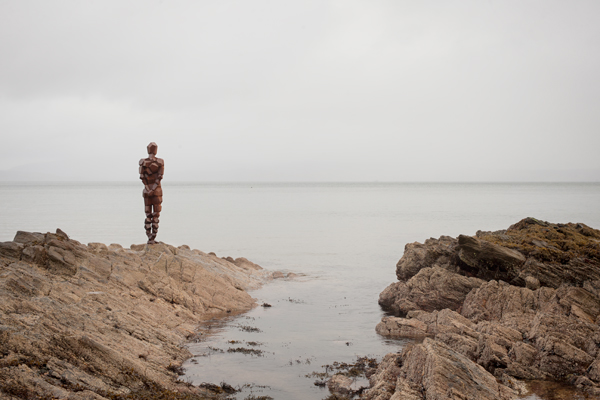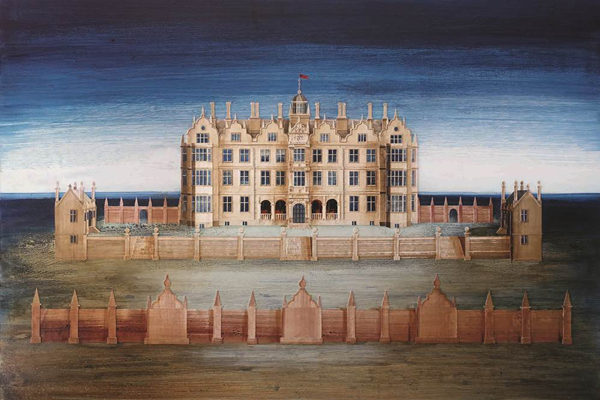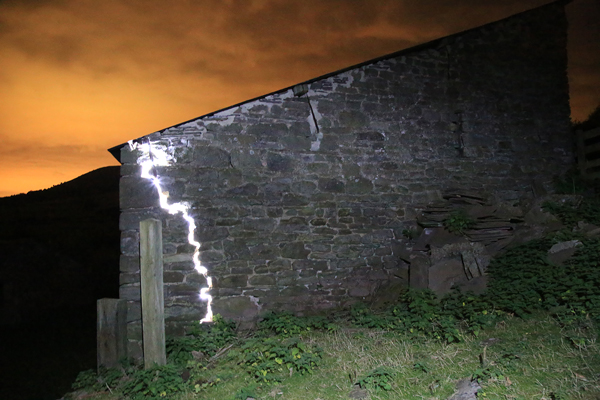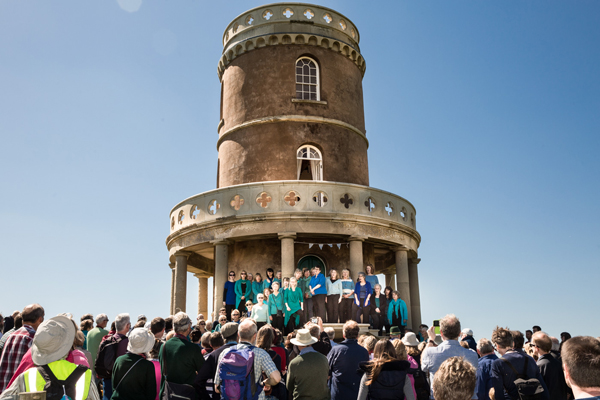At Landmark we have a long relationship with the arts. A number of our buildings have inspired - even been lived in by - famous artists, linguists and musicians over their histories. Paul Nash painted Clytha Castle, Thomas Hardy knew Clavell Tower and the composer Granville Bantock rented Coed y Bleiddiau, to name but three examples.
Our 201st Landmark was Dunshay Manor. Nestled down a leafy Dorset lane, Dunshay was purchased by the society portraitist George Spencer Watson RA in 1923. From that moment on, it became an epicentre of cultural thought and activity. George’s wife Hilda was a dance and mime artist and converted the stable block into a theatre in around 1928. Their daughter Mary became an exceptional sculptor, living and working at Dunshay almost her whole life and ultimately bequeathing the property to us.
Today, we know that our collection of rescued and restored buildings inspire creative responses from many who stay with us: drawings, poems and literary works scatter our Log Books, musicians find inspiration to compose and visual artists sketch, paint and collage in our surrounds.
Acknowledging the inspiration our buildings can ignite, in recent years we’ve worked with a number of remarkable artists, channelling and showcasing their vitality in a series of exhibitions and performances.
As art historian Dr James Fox introduces Dunshay Manor and the Spencer Watson family, here we look back on some of the most memorable recent creative responses to our buildings.
LAND
The centrepiece of our 50th anniversary celebrations, Antony Gormley designed five sculptures celebrating the special relationship between people, places and time. Collectively called LAND, the life-size standing sculptures were cast in iron and installed at five sites selected by the artist.
Each sculpture was specially-designed and created with consideration for each building and its surroundings. All five points were connected by water. Four stood sentinel on our coastline and the fifth – anchoring the whole installation – was on the South Stratford canal. The LAND sculptures were located at Martello Tower, Aldeburgh, Suffolk; Clavell Tower, Kimmeridge Bay, Dorset; Saddell Bay, Mull of Kintyre, Scotland; Lengthsman's Cottage, Lowsonford, Warwickshire; and Lundy Island in the Bristol Channel.
Author Jeanette Winterson penned an accompanying catalogue, eloquently weaving Landmark’s mission with her reflections on Gormley’s memorable works.
“THE WARRIOR
So he seems to me, this body watching the water that at full tide pulls Saddell Castle and Shore Cottage into its reflection.”
Extract taken from the LAND catalogue
The sculptures were originally commissioned to remain for just 12 months, as temporary structures alongside places of permanence, but thanks to an anonymous donor GRIP now remains steadfast on the shores of the Kilbrannan Sound.
 GRIP at Saddell Bay. Photograph by Clare Richardson
GRIP at Saddell Bay. Photograph by Clare Richardson
Inspiring Landmarks: a summer exhibition
In July 2017, we hosted a week-long pop-up exhibition of works by three highly regarded professional artists and regular Landmarkers. Artists Kurt Jackson and Ed Kluz joined ceramist Prue Cooper in a display of works inspired by our sites and staged in the historic environs of Old Truman’s Brewery near Spitalfields Market, London.
While Kurt’s work is infused with concern for natural history, ecology and environmental issues, Ed explores contemporary perceptions of the past through the reimagining of historic landscapes, buildings and objects. Prue’s ceramic platters show a - sometimes whimsical - historic slant, including references to the histories of our buildings.
We have continued to work with Ed Kluz, who recently designed a bespoke bookplate for Landmark’s treasured Log Books.
 Chipping Campden House by Ed Kluz. Paper collage and mixed media 2017
Chipping Campden House by Ed Kluz. Paper collage and mixed media 2017
Artists in residence at Llwyn Celyn
Each step of our recent £4.2million project to restore the late-medieval Llwyn Celyn was followed closely by a number of talented and dedicated artists-in-residence.
Before we began transforming the site, in the winter of 2016 Jamie Lake and William Carter captured the fragility of its near-ruinous state in a series of light installations, their photographs and ink drawings accompanied by poetry from Fiona Hamilton.
During our works on-site, poet clare e. potter produced poems and soundscapes in both Welsh and English, discussing her work on the Welsh TV channel S4C in spring 2019. Photographer Toril Brancher produced a series of images reflecting on the relationship between the manmade and natural history of the site, while painter Catherine Baker created large-scale drawings inspired by walking through the seasons, the life and landscape of the site and its situation. As we opened the restored building, Stefhan Caddick marked the celebrations with a series of sound installations.
The legacy of these artworks lives on, with many of the photographs, drawings and poems now permanently displayed onsite in the free-to-access Beast House and across the community-use spaces of The Yard.
These artistic endeavours are the latest in a long tradition of the arts in the Llanthony Valley. In the late 18th century artists from Paul Sandby to J M W Turner and poets such as William Wordsworth visited, while in the 20th century figures such as Eric Gill, Eric Ravilious and John Piper sought inspiration from the landscape. Novelist, poet and playwright Owen Sheers continues this tradition and has written lyrically on the landscape, including in this review of Llwyn Celyn.
 Artist Jamie Lake exhibited a series of light installations at Llwyn Celyn in the winter of 2016
Artist Jamie Lake exhibited a series of light installations at Llwyn Celyn in the winter of 2016
Contemporary music and words
In May 2015 we celebrated a weekend of music with simultaneous performances at 50 Landmarks across the UK. The award-winning Kerry Andrew composed a short piece which was used by over 700 musicians – professional groups, community choirs and even Brownies - to be interpreted and performed for a collective audience of over 15,000.
Since then, we’ve worked with the Spitalfields Music Festival to host performances in our evocative Huguenot house on Princelet Street and countertenor Iestyn Davies (also a Landmark Ambassador) has sung in Martello Tower. The rock band Elbow found inspiration for their seventh album Little Fictions while staying in Gargunnock House in Stirlingshire, recording tracks huddled around the sitting room fire while snow lay on the ground.
Writer and regular Landmarker Alexandra Harris has, over a period of many years, been captivated by the climate at Landmarks. Her enchanting book Weatherland: Writers and Artists under English Skies explores how the weather has shaped the cultural life of Britain and makes reference to the red-brick Laughton Place.
In more recent months, Robert Macfarlane completed his book Underland: A Deep Time Journey while staying in West Blockhouse and West Midlands poet Liz Berry found inspiration at Tixall Gatehouse to write Tixall Gatehouse Angel.
“Here, Everlasting Spring.
Here Queens Low, Weeping Cross,
Raw Bones Meadow.
Here I watched a shepherd's child
kneel and blow
the crown from a wet-the-bed.
…”
Listen to Liz read her poem in full here
 Crowds gathered at Clavell Tower to celebrate our 50th anniversary in May 2015. Listen to a recording of the performance here
Crowds gathered at Clavell Tower to celebrate our 50th anniversary in May 2015. Listen to a recording of the performance here
Title quote taken from the LAND catalogue by Jeanette Winterson